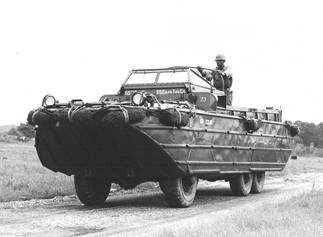| Year | 1942 |
| Vehicle Type | [@type] |
| Origin & Designer | [@designer] |
| Numbers Produced | 21.147 |
| Crew | 2 + 25 Troops |
| Main Armament | [@main_armament] |
| Main Armament | [@sponson_traverse] |
| Elevation | [@elevation] |
| Turret Traverse | [@turret_traverse] |
| Gun Traverse | [@gun_traverse] |
| Gun Mount | [@gun_mounts] |
| Maximum Range | [@maximum_range] |
| Armour Penetration | [@armour_penetration] |
| Gun Sight | 9.04m |
| Secondary Armament | [@secondary_armament] |
| Smoke Discharger | [@smoke_discharger] |
| Ammunition Carried | [@ammunition_carried] |
| Height | 2.17m |
| Width | 2.05m |
| Length | 9.04m |
| Combat Weight | 6.750 kg (Cargo Weight 2.300 kg) |
| Ground Clearance | 0.32m |
| Fording Depth | Floats |
| Trench Crossing | [@trench_crossing] |
| Obstacle Clearance | [@obstacle_clearance] |
| Climbing Ability | [@climbing_ability] |
| Radio | [@radio] |
| Armour | None |
| Engine | Engine: GMC 6-Cylinder 269 (Petrol) |
| Transmission | 5 Forward & 1 Reverse |
| Maximum Road Range | 400 miles (640 km) |
| Maximum Cross Country Range | [@maximum_cross_country_range] |
| Maximum Water Range | 49 miles (80 km) |
| Maximum Road Speed | 55 mph (88 kph) |
| Maximum Cross Country Speed | 12 mph (19 kph) |
| Maximum Water Speed | 6 mph (12 kph) |
| Variants | [@variants] |
| Notes | After being rejected by the US military a lucky encounter changed their minds when a DUKW which was doing trials, rescued a US coast guard vessel that had ran aground. The DUKW was built around the GMC truck with similarities to GMC CCKW. It had a Six Wheel drive and a propeller and had a water tight hull. It was also the first military vehicle to allow the driver to vary the tire pressure from inside the cab, which was useful when driving across soft sand and then changing to hard surfaces. It was supplied to the US army, US Marine Corps and the British and saw service in the pacific theatre, the Mediterranean and the Normandy landings plus the various amphibious actions across northern Europe. The DUKW was used extensively to carry supplies through water and overland and continued in service into the Korean War. |
